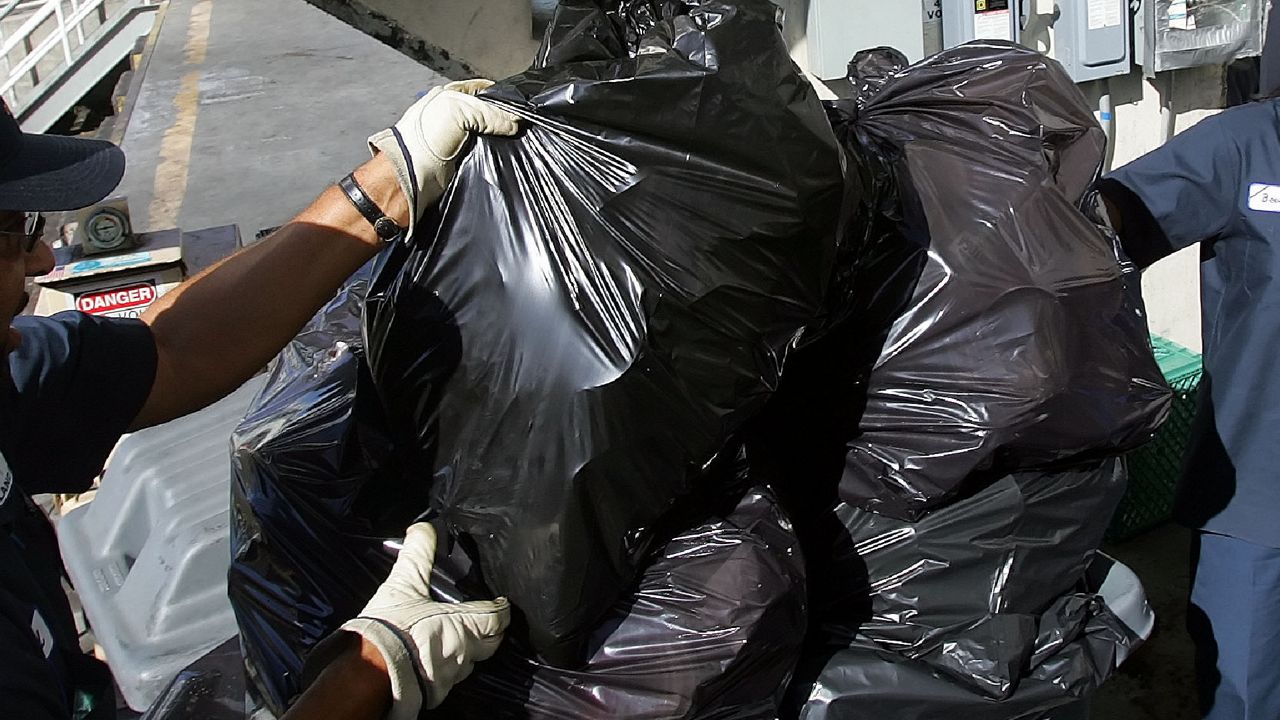LONG BEACH, Calif. — Reduce, reuse, recycle is a familiar refrain to most Californians. Trash goes in the black bin and recyclables are tossed into the blue, with separate bins for garden waste and compostables. What may be less familiar is a practice many Southern California cities use to divert their waste from landfills: incineration.
A bill introduced in the California legislature this week seeks to end the practice. Assembly bill 1857, introduced by Assemblymember Cristina Garcia, D-Bell Gardens, would remove an incentive in California waste law that gives cities a recycling credit for burning trash instead of sending it to a landfill. It would also redefine incineration as disposal and require the state’s waste management agency to prioritize zero-waste strategies.
“It is past due that the legislature update statewide policy on municipal incinerators to better advance equity and sustainability,” Garcia said.
There are just two waste incinerators in the state of California: Southeast Resource Recovery Facility in Long Beach and Covanta Stanislaus in Stanislaus County. Both facilities are in environmental justice communities with higher proportions of people of color.
“Municipal waste incinerators are a reminder of how environmental racism can become normalized as a policy-neutral solution when the story is always more complicated,” Garcia said.
Under a California law known as AB 939, passed in 1989, municipalities must divert 50% of their waste from landfills toward things like recycling, source reduction, composting and reuse. But many cities take advantage of a credit in that law that allows them to achieve 10% of the goal by diverting waste to an incinerator.
“Because of that incentive, you have this idea that burning waste is just as beneficial as recycling and reuse and composting. The consequence is that significant amounts of waste from all over the state are going to incinerators in communities that are bearing the brunt of this loophole,” said Byron Chan, an associate attorney with the environmental group Earthjustice, which has been working with community groups advocating for the incinerator’s closure in the Long Beach area.
“To us, incineration is just as bad as landfilling,” said Whitney Amaya, a West Long Beach resident who lives five miles from SERRF and a zero-waste organizer for East Yard Communities for Environmental Justice, which cosponsored AB 1857. “There’s always this either-or argument, but we think there’s a better way for us to manage waste. It’s resources. Once you dispose of them, you can’t get those resources back.”
California has not issued a permit for a new incinerator since the 1990s, according to CalRecycle, though it is still legal for the two remaining municipal solid waste incinerators to operate in the state.
“We have a lot of polluting industries in our communities,” Amaya said, citing the Port of Long Beach and the trucks that service it. But the incinerator industry “is a very major player. It’s contributing to the health impacts we see and feel.”
According to CalRecycle, the hazardous byproducts of burning municipal waste include bottom ash, which is the noncombustible remains of the incineration process that include metals; fly ash, a fine particulate that must be treated as hazardous waste; and flue gas emissions that are released into the air.
The Clean Air Act Amendments of 1990 require incineration facilities to install equipment to help reduce emissions, which has led to “large decreases in emissions of pollutants such as sulfur dioxide, dioxins and heavy metals,” according to CalRecycle, though “emissions may still contain carbon dioxide, carbon monoxide, nitrous oxide, nitrogen oxides, ammonia, volatile organic compounds, heavy metals and persistent organic pollutants, such as furans and dioxins.”
Such emissions have been linked with reproductive, respiratory and cardiovascular health issues. But landfills also generate emissions that contribute to climate change. They are one of the country’s largest sources of methane — a greenhouse gas 25 times more potent than carbon dioxide, according to the U.S. Environmental Protection Agency.
“We do have pollutants, but we’re highly regulated on what we emit and we’re able to meet those regulations,” said Long Beach’s Bureau Manager for Electric Generation, Alan Foley. The SERRF incinerator in Long Beach is regulated by the South Coast Air Quality Management District. “We’ve done health risk assessments that show there is a negligible effect in the community from our emissions.”
Foley said cities choose SERRF because it is environmentally superior to landfilling.
“For every ton of waste that goes through waste-to-energy versus being landfilled, one ton of greenhouse gas emissions, or their carbon equivalent, are not emitted into the atmosphere,” he said, adding that the Long Beach incinerator generates 35 megawatts of electricity, the majority of which the city sells to the power grid.
About 40% of the solid waste burned at SERRF is from Long Beach. The remainder is from surrounding communities that truck it to the facility. By volume, Lakewood, Signal Hill, Pasadena and Norwalk round out the top five cities diverting waste from landfills for incineration at SERRF, Foley said.
Los Angeles, which plans to divert 100% of its landfill waste by 2050 as part of the city’s Green New Deal, “does not use the Long Beach SERRF regularly. It is only part of our contingency operations/adverse conditions,” said LA Sanitation and Environment spokesperson Heather Johnson. “In the last five years, we have used the facility only once to process 176 tons,” she added, noting that the city collects 900,000 tons of waste annually.
In 2020, the SERRF in Long Beach processed 382 tons of waste. Covanta Stanislaus in Stanislaus County processed 278 tons, according to CalRecycle. Annually, 42.2 million tons of material from California are disposed in landfills, with each California resident throwing away 6.7 pounds of waste daily.
“Moving to a circular-use economy is an opportunity for California to incentivize source reduction, reuse and products intentionally designed to flow back into the system for efficient collection and in-state remanufacturing,” CalRecycle told Spectrum News 1. “California is currently planning the foundation for a zero-waste future.”



